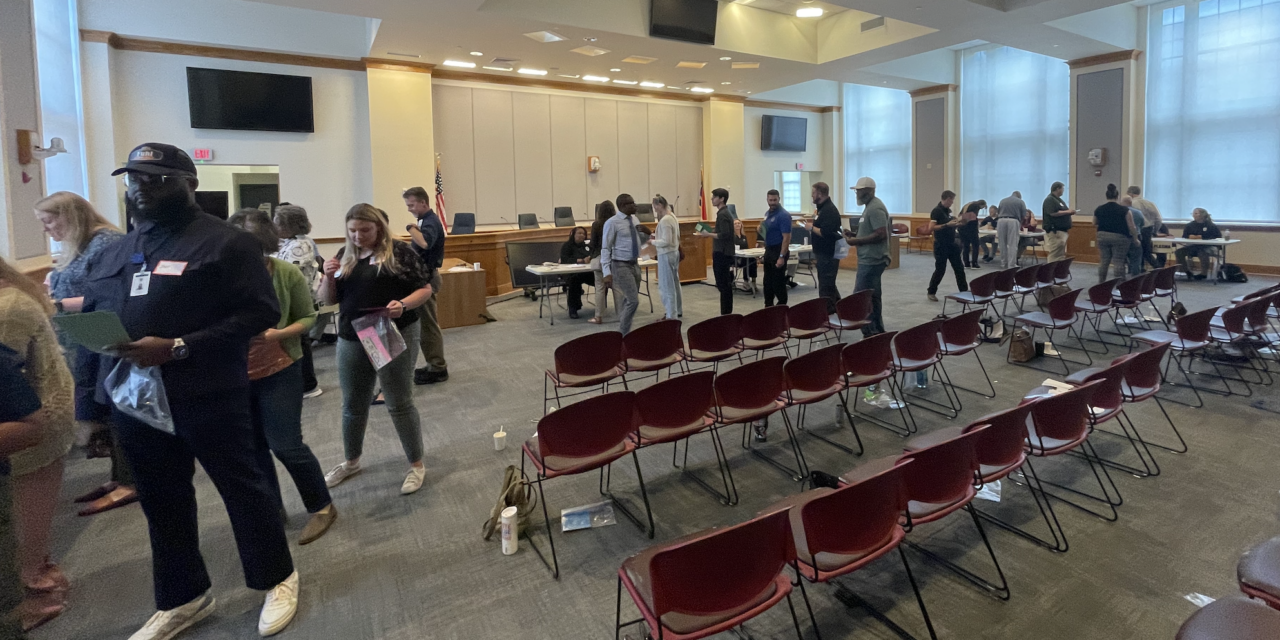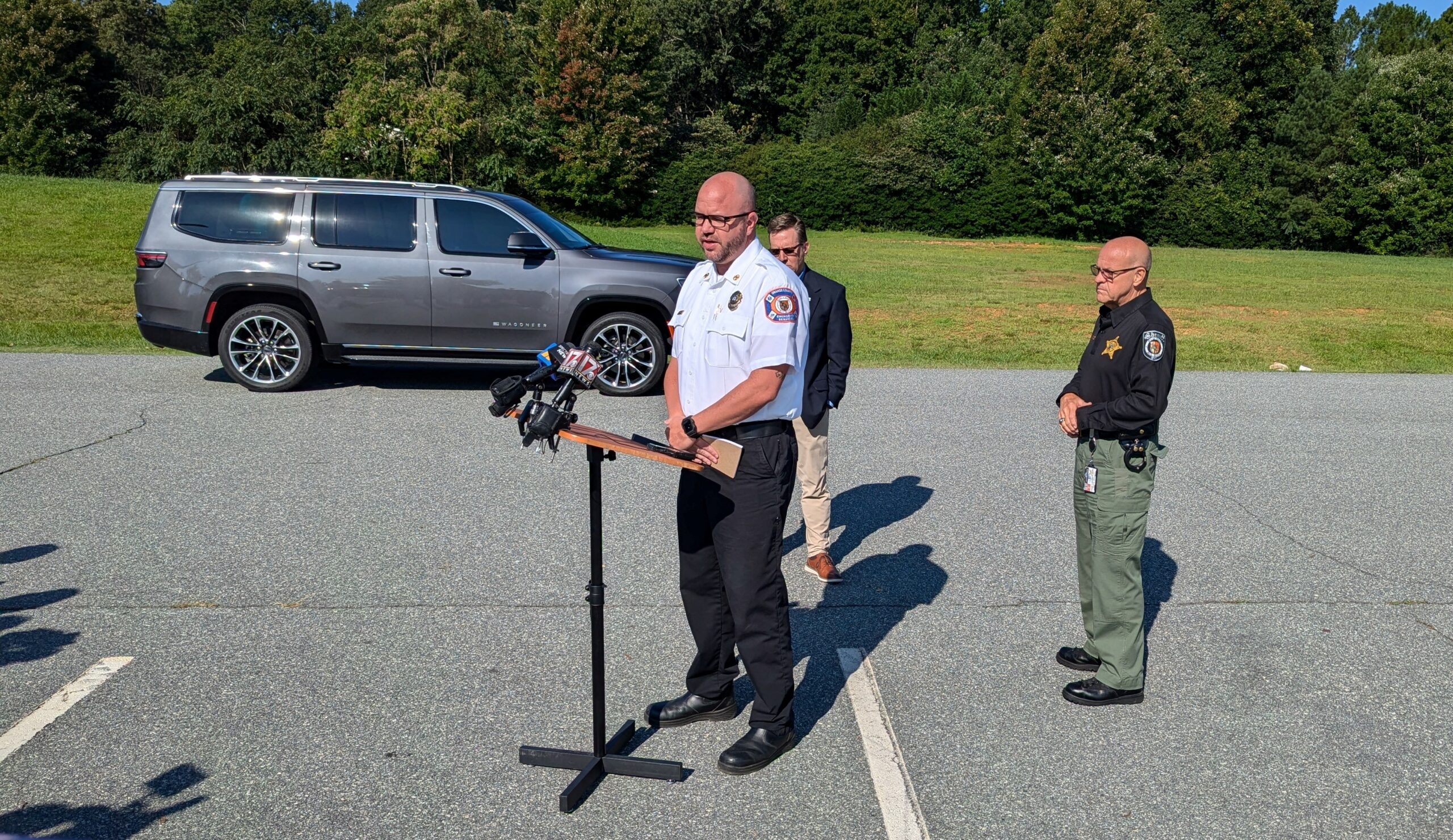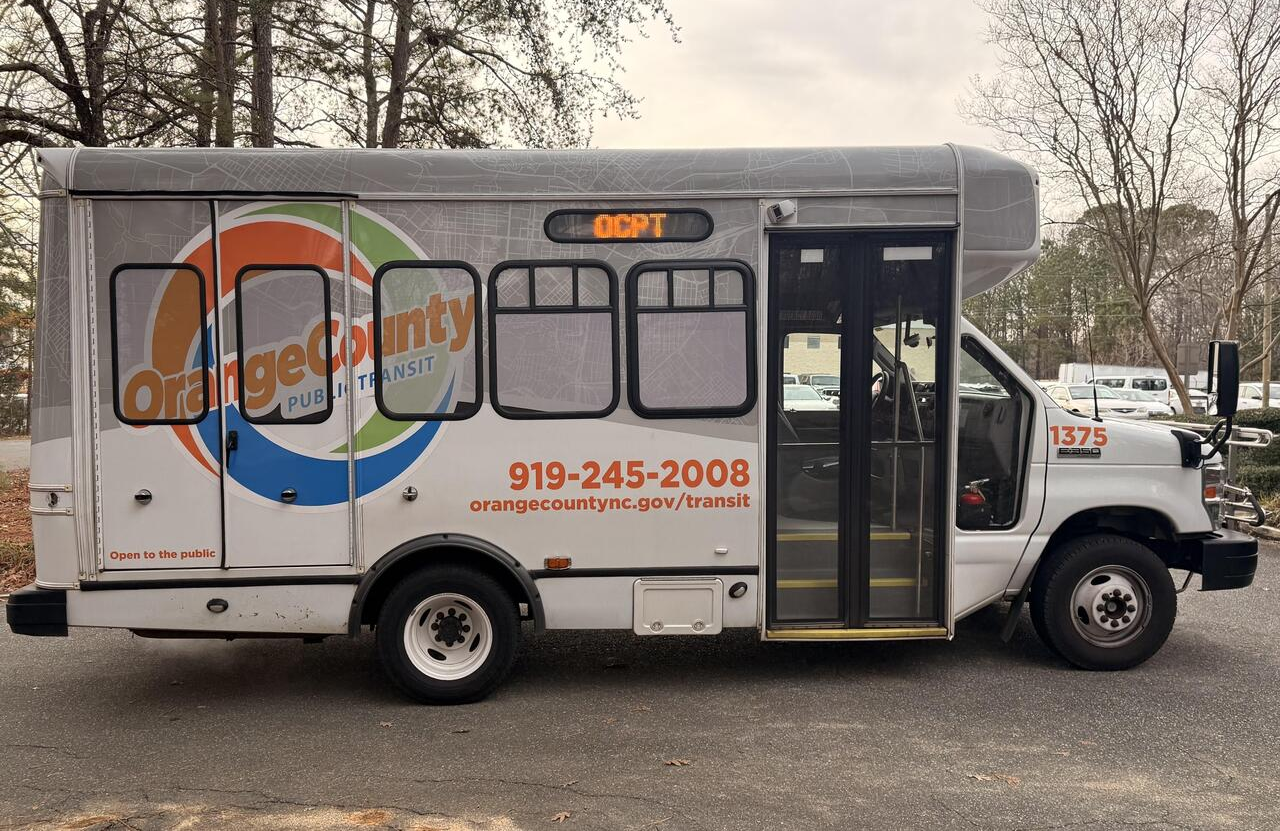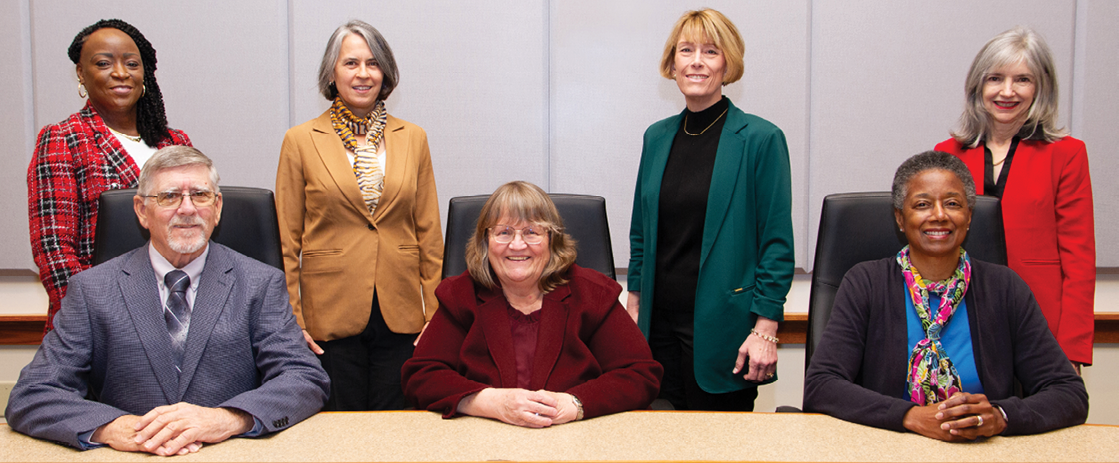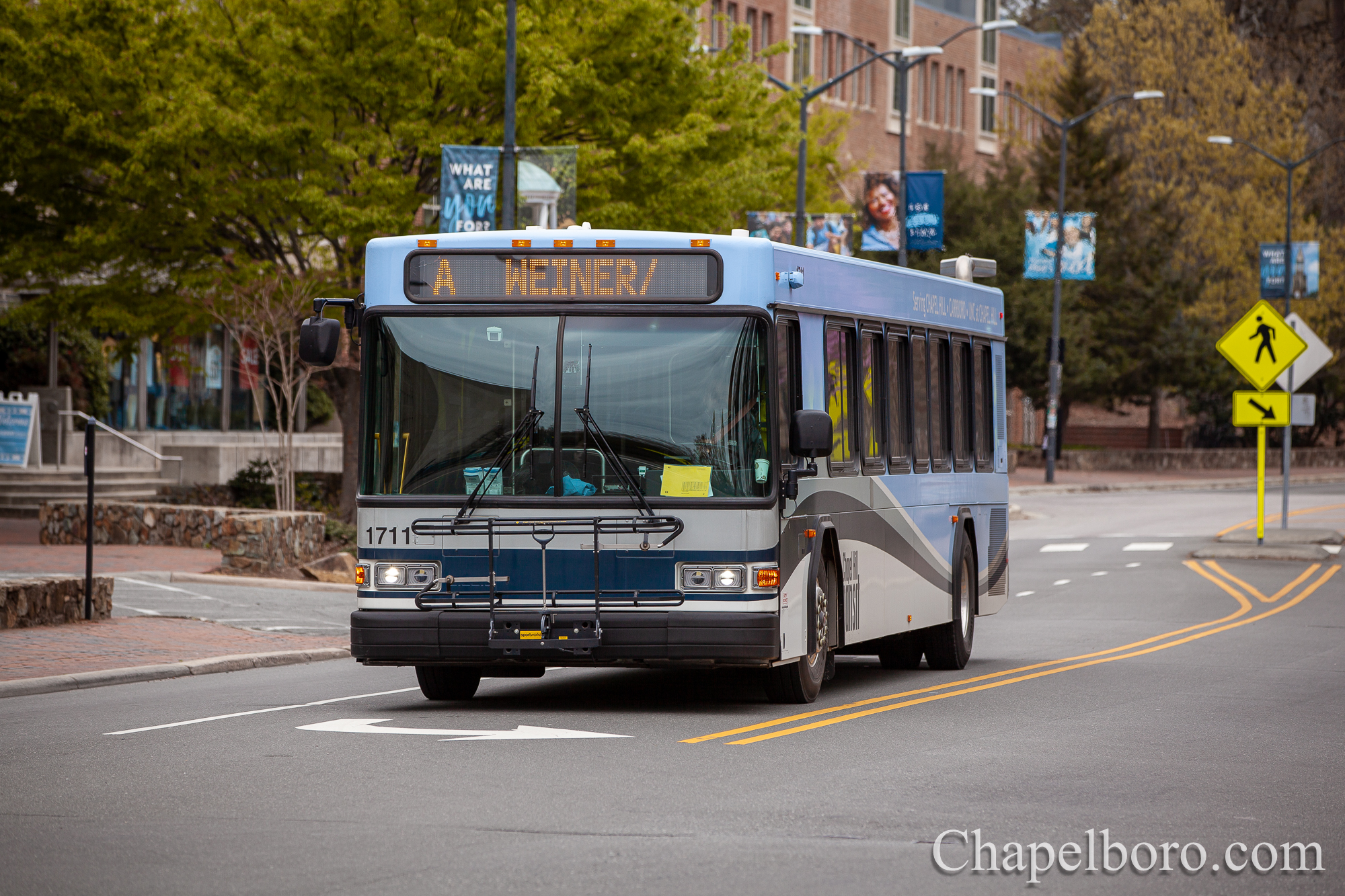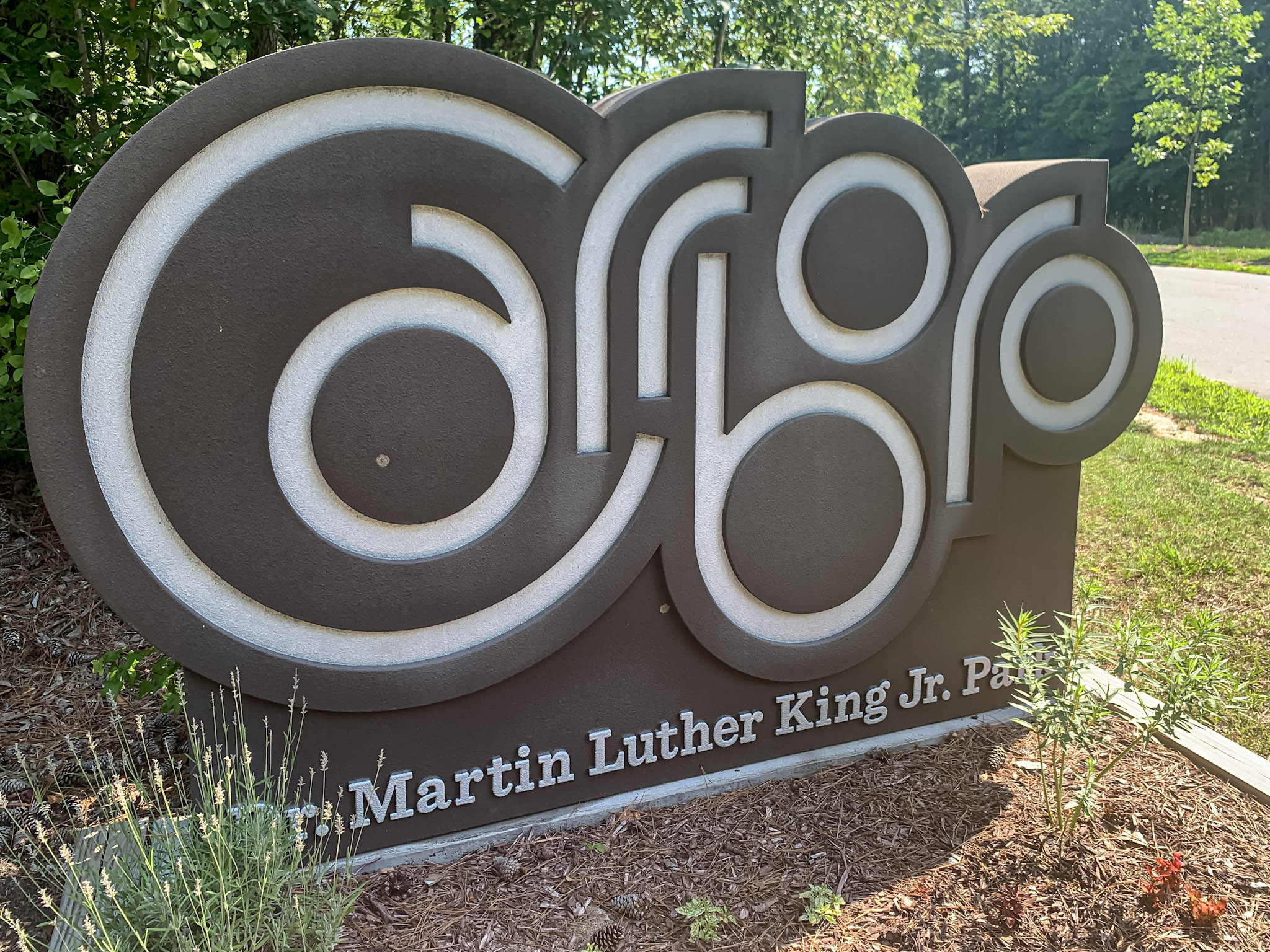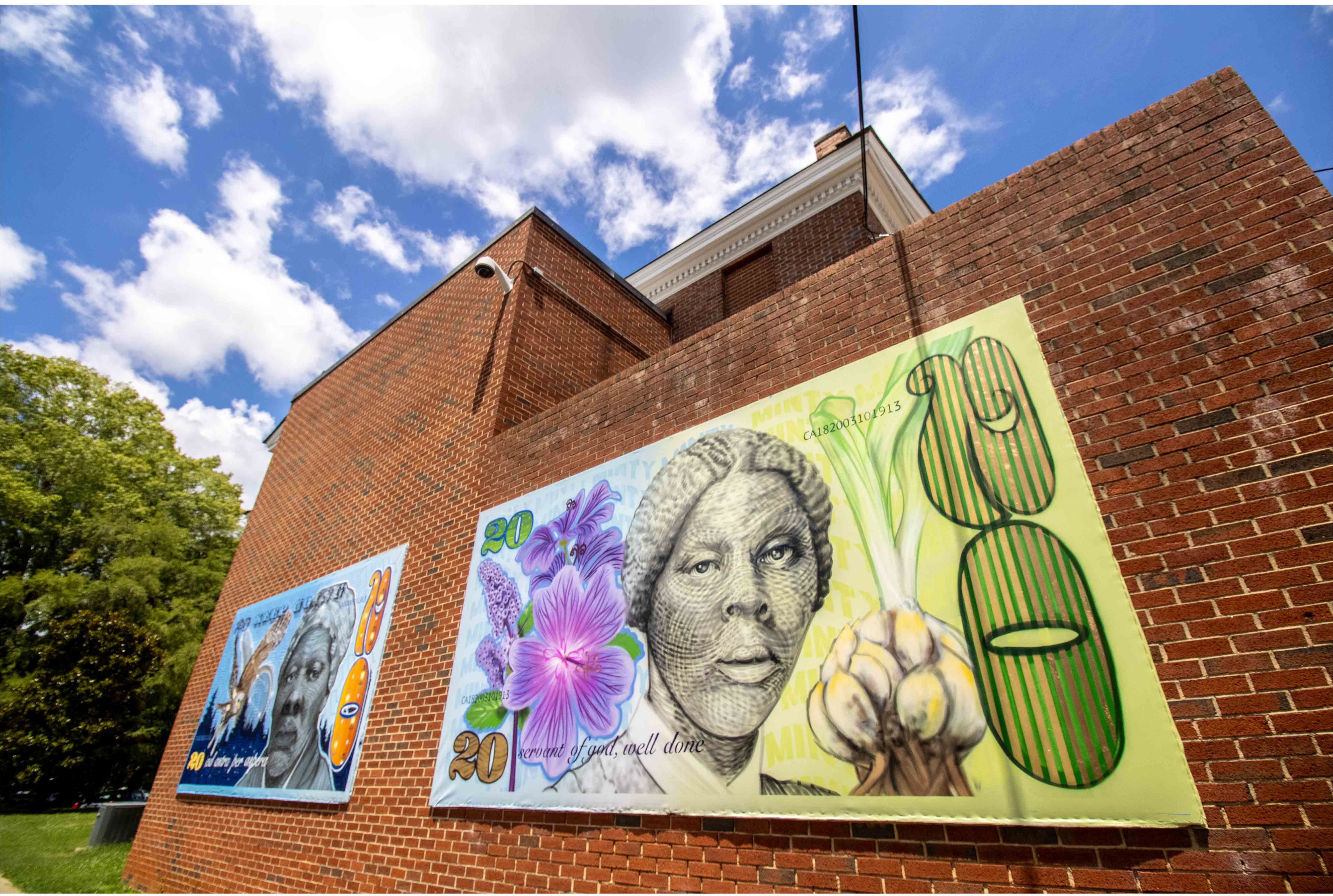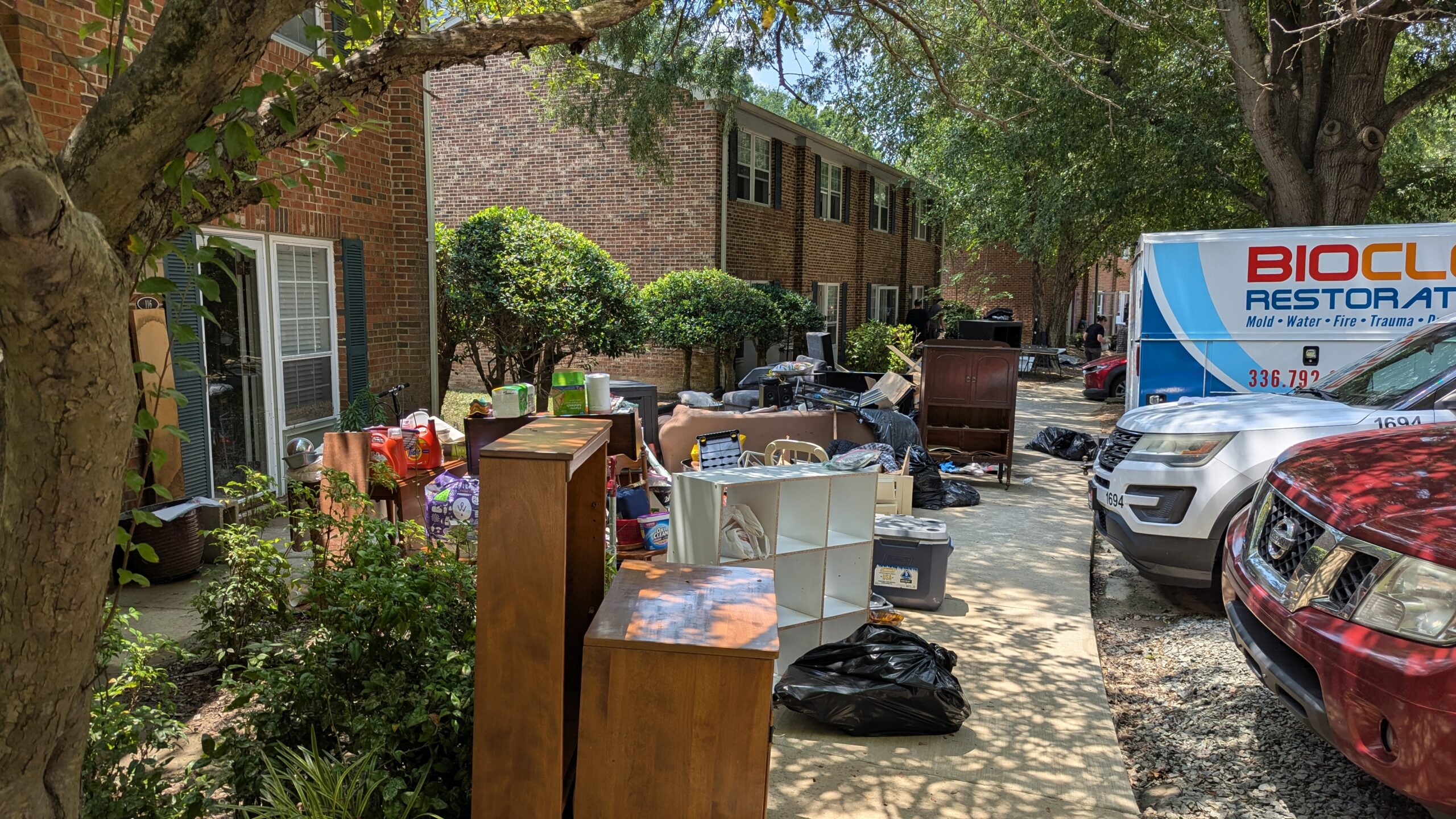At the end of Week 3 of the prison re-entry simulation, I got evicted for not paying rent.
I tried, but I had spent most of my money on food, mandatory treatment, and transportation tickets to get to my job just so I could try to regain what I’d already spent. I didn’t have any items to pawn, as some participants did, and a desperate attempt to get some money by donating blood plasma was rejected when I pulled a card that said I wasn’t allowed to because I’d recently gotten a tattoo. So, I became homeless.
The Local Re-entry Coordination Council of the Orange County Criminal Justice Resource Department hosted the simulation on Sept. 25 at the Whitted Human Services Building in Hillsborough, with the overall purpose of illustrating the ways that people are often set up to fail upon their re-entry to society from prison.
The format of the simulation was based on each person receiving a randomly-assigned persona. Everyone got a bag with information about their character, including a name, history, list of expenses, and supplies such as money, ID cards, and transportation tickets. My name was Cooper, and I had just served 13 years for drug manufacturing with intent to distribute. I was among the luckier ones, since I had a full-time job, three forms of identification, and a GED to start with. Most other people didn’t have all those, or even any of them, at the beginning.

Participants received randomly assigned bags with information about their characters and supplies such as money, ID cards, and transportation tickets.
Participants had to complete tasks like seeing their probation officers, attending treatment and AA meetings, receiving drug tests, paying rent, paying for food, paying restitution, paying off student loans, paying for child support, etc. by going around the room to tables offering those services.
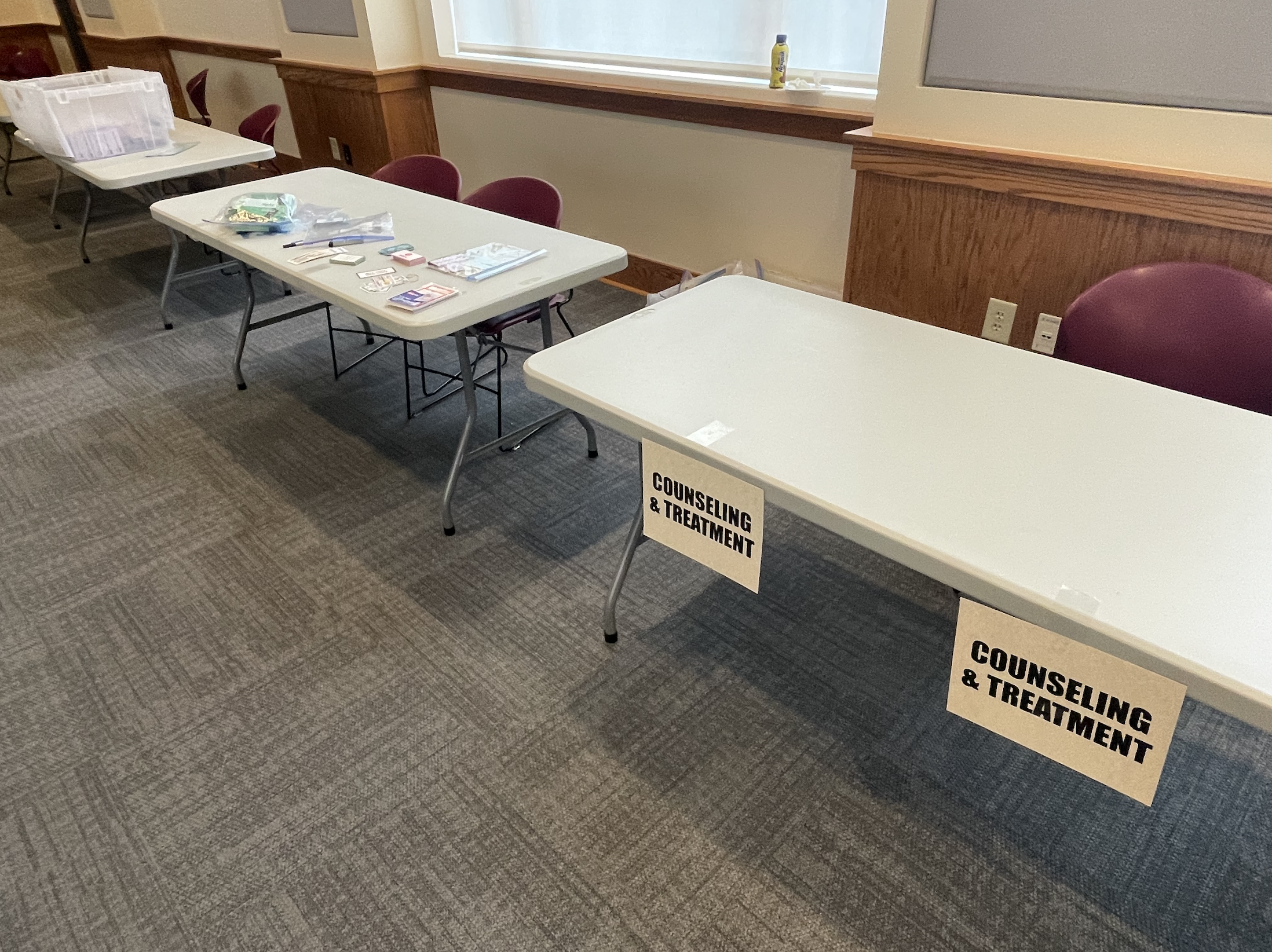
Participants had to accomplish tasks by going to various tables offering services around the room.
“It’s super easy. All you have to do is listen to me and follow the instructions,” Guy Buckner, the person running the simulation, repeated several times. “If you follow the instructions, you should be successful.”
But, in order to even get anywhere, you need to have enough transportation tickets. To get those, you need money. To get money, you need a job. To get a job, you need at least a GED. To get a GED, you need three forms of identification. To get identification, you need to go through a process that consumes lots of precious time. The “weeks” in the simulation were 15 minutes long, and overcrowding at each table made most lines take at least three or four minutes, often even more. If participants weren’t back in their chair, which represented their housing, at the end of the week, they were arrested for breaking parole.
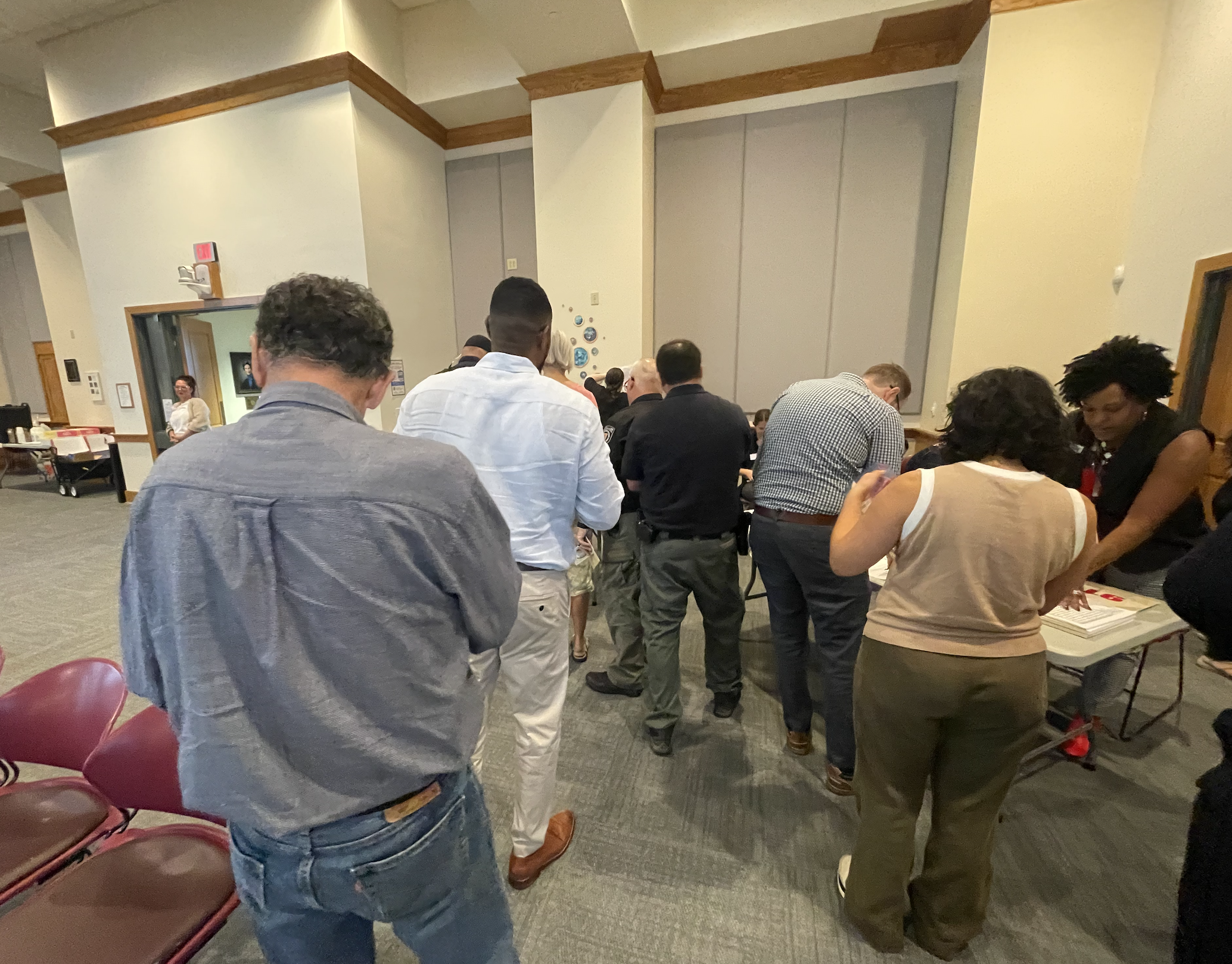
Long lines caused by deliberate overcrowding were one of the main obstacles to accomplishing tasks in time.
Ben Gear, the Re-entry Council coordinator, was in charge of coordinating the event. He himself had to go through a re-entry process in real life, an experience that makes this job all the more personal and important to him.
“That’s why this matters to me, because I see that I’m the exception, I’m one of those people who actually had the resources, had the people around,” he said. “But if you wind up in prison, you don’t usually have a strong support system. And so the objective is to try to fill that gap, and that’s why it’s important to me.”
Gear was also proud of his effort to arrange for local police officers to participate in the simulation. There were about 15 of them in uniform participating.
“My hope is that it inspires empathy,” he said. “And they’re actually like, ‘Hey bro, you know it isn’t as easy as I thought. And maybe, me being a not-kind person to these people doesn’t help the scenario.’”
One of the participants was Gear’s former probation officer, Vickie Feaster Fornville. She thought that Gear did a great job coordinating the event, and noted that although it’s not perfect, the simulation did accurately capture some key elements of re-entry.
“I definitely think the fact that they’re putting all the things you need to be doing in a short amount of time right when you get out, that is reality,” she said. “And depending on how long you’ve been in custody, the world may be very different when you come out.”
Buckner, who’s a project coordinator for the Division of Rehabilitation and Re-entry at the North Carolina Department of Adult Corrections, also said that hands-on experiences like this are important for building empathy.
“A lot of people get knowledge or awareness. Somebody who’s never gone through it and doesn’t know the struggles, and they go through it, they see the frustration,” he said. “So yeah, we get a lot of great, positive feedback.”
Buckner also commented that these events tend to be good points of connection with organizations that work in this area. Indeed, a handful of local groups were represented there, including Resources for Peace, Darkness RISING, and the Alliance of Disability Advocates.
“The reason we do the simulations is because it’s helped with individuals seeing the difficulties, but it’s also helped with communication and working with other organizations, so building some good connections,” he said.
He mentioned that interest in these simulations has been growing recently, and that they’re now running around three or four per month around the state for a variety of different audiences.
As for me, I eventually did end up paying my rent the following week. But I was only able to do so by sacrificing a food purchase, a round of treatment, and a visit to my probation officer, and by saving time by skipping an AA meeting.
Chapelboro.com does not charge subscription fees, and you can directly support our efforts in local journalism here. Want more of what you see on Chapelboro? Let us bring free local news and community information to you by signing up for our newsletter.

